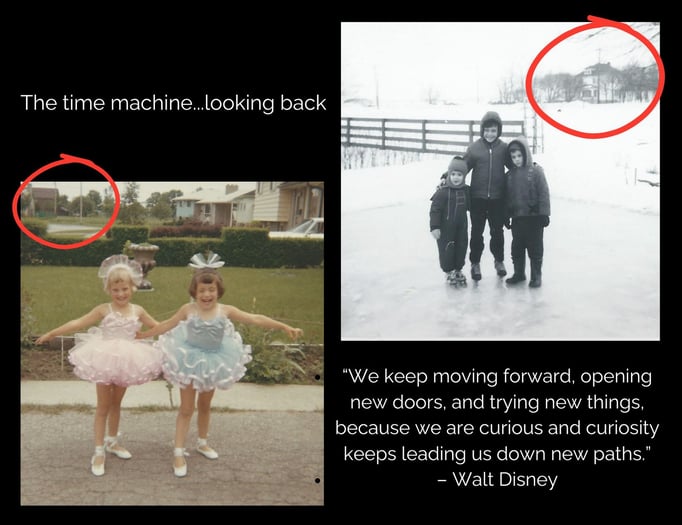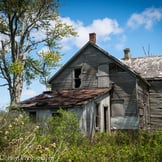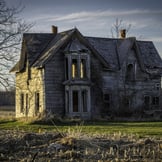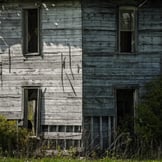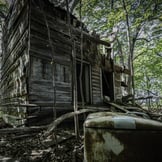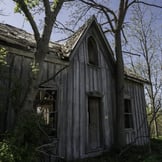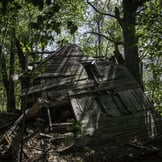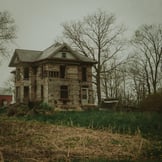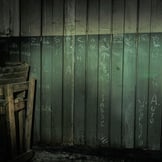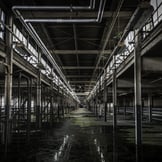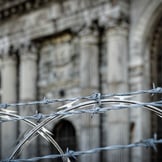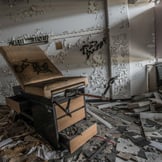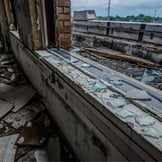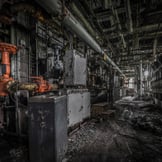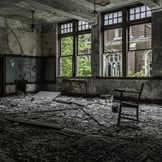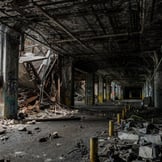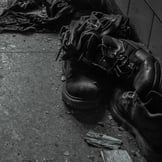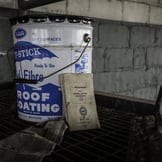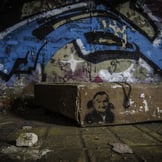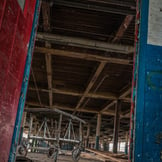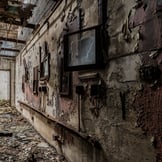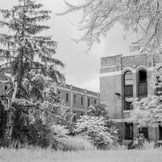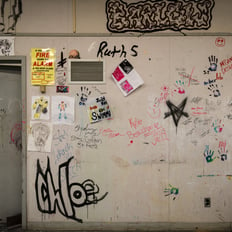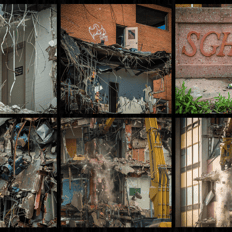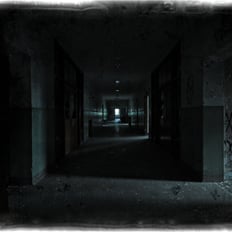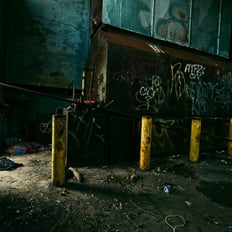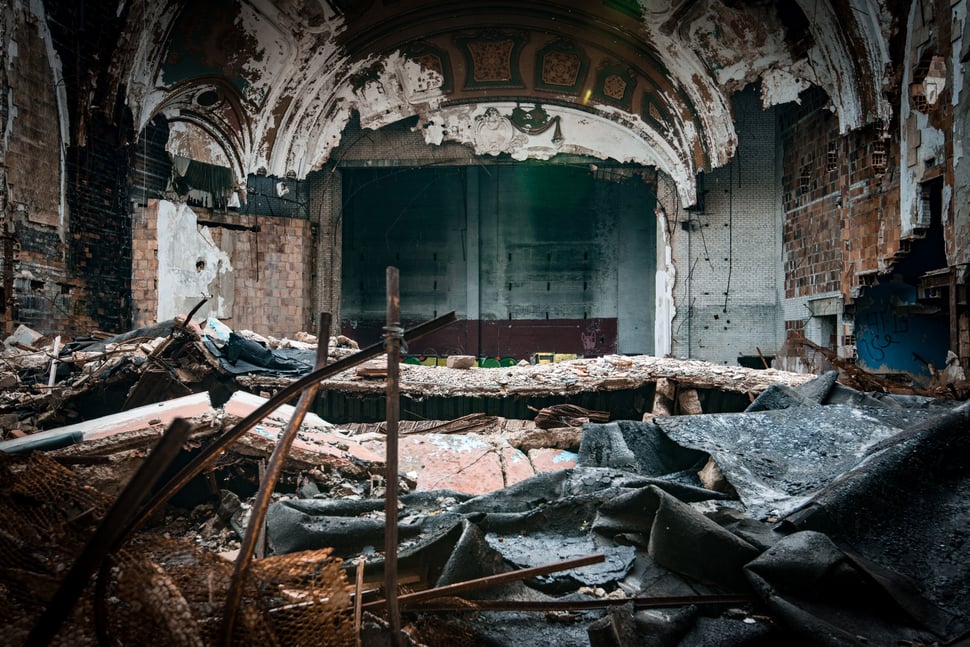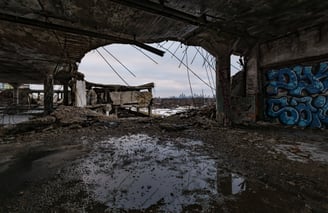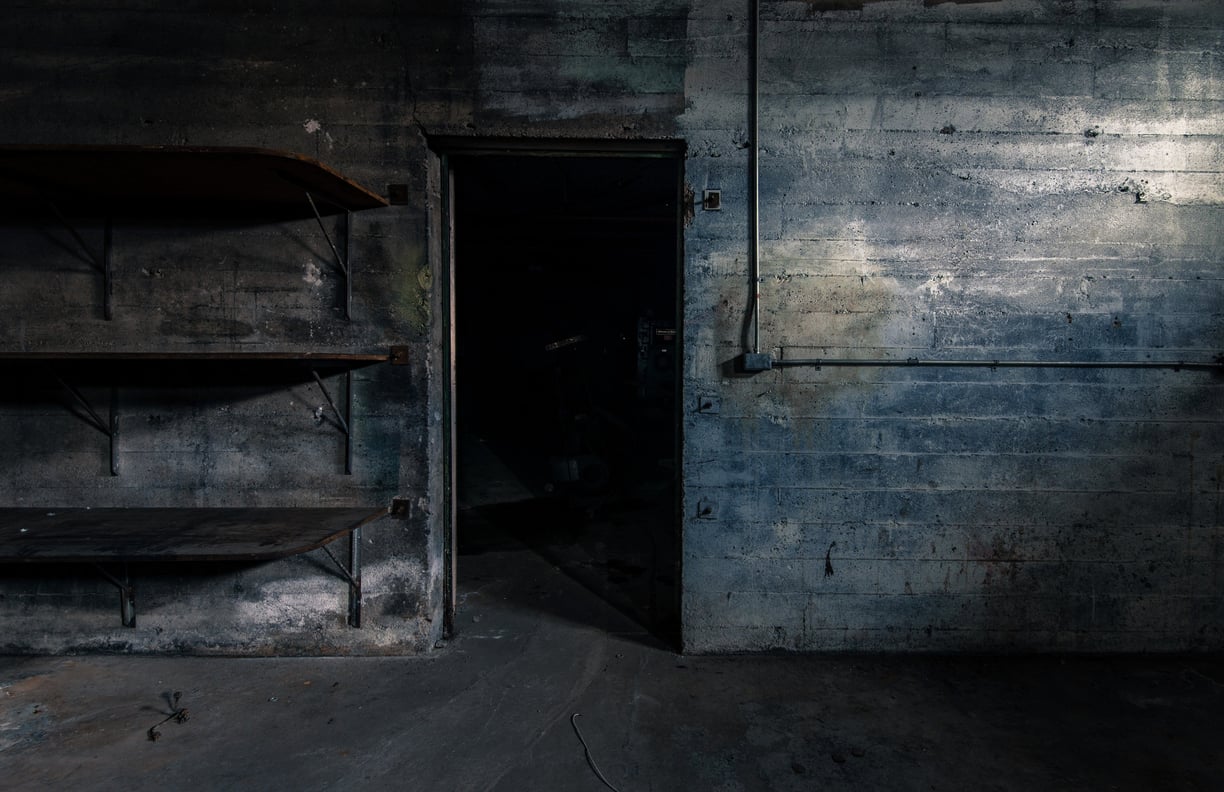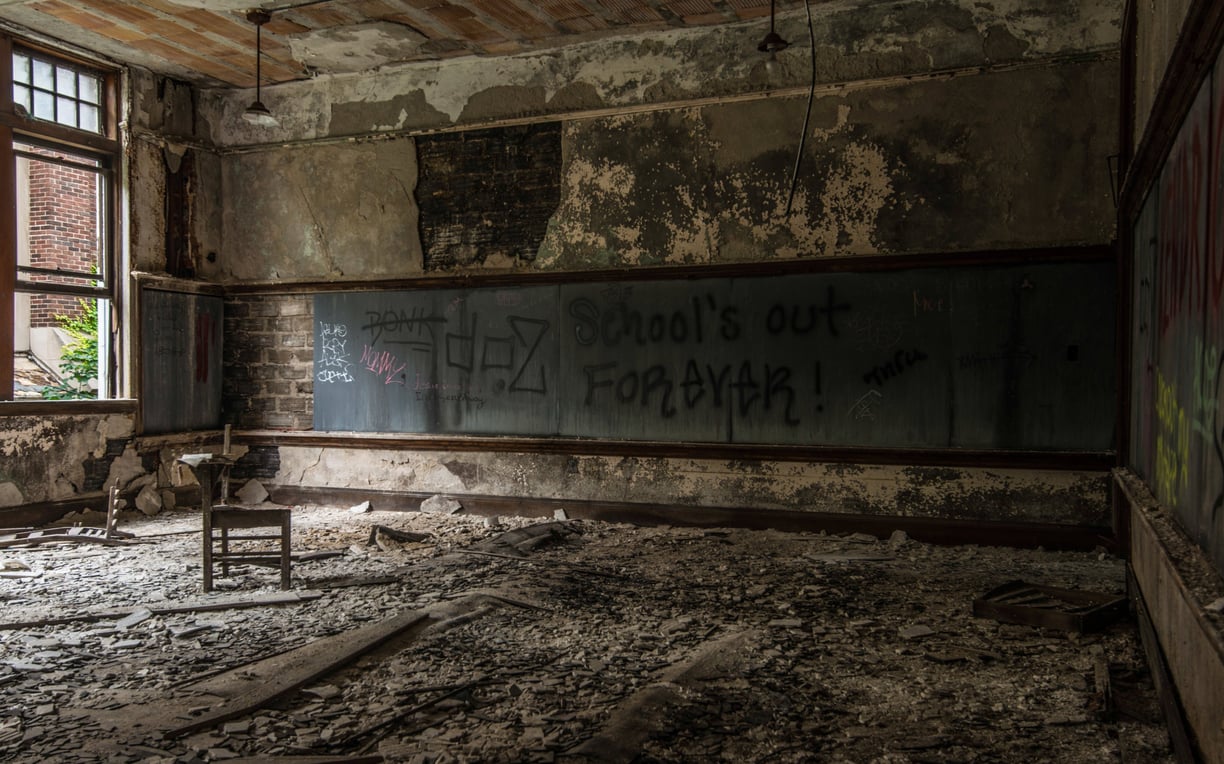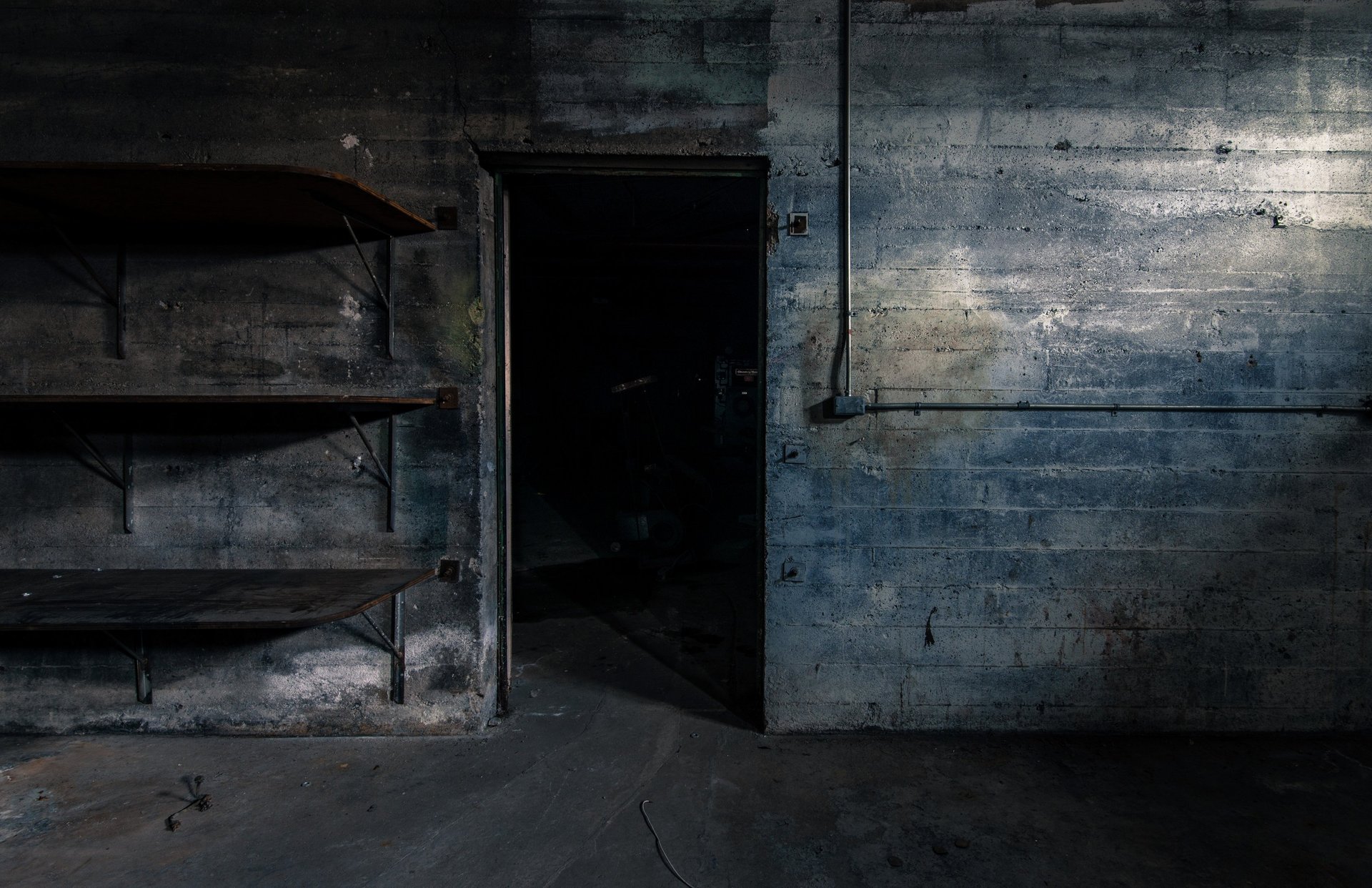Although it feels like yesterday, a decade back I wrote an article called "Bullets, Graffiti, and Axe-Wielding Strangers - An Ode to Urbex" for 500px (link below), reflecting on my adventures and thoughts on exploring the abandoned & discarded. Periodically, I revisit the article while sharing it on social media. While my bucket-list goals have drastically changed in the years since I wrote the article, the saying that "life imitates art" has certainly rang true in the years since it's publication.
Fast forward to 2024.
Reflecting back on another decade of photography, I've continued my urbex journey - places that are time capsules, places now demolished, places that linger by the side of the road, their dull, flat eyes wearily watching our daily lives passing them by, waiting their turn at demolition or arson - or, a curious passerby.
And, they invite us to explore.
Some aspects of urban exploration haven't changed - the smell, the sights, the curiosity in lives changed, lives gone. What has changed, are the feelings evoked. A decade ago I would wander in fascination of places and things left behind, the beauty of graffiti adorning any available surface, the meaning of messages left by former workers, tenants, or those on an urbex adventure of their own.
Then, the art of abandonment became far more real. On a personal level.
We've all experienced abandonment and loss in our own unique ways - divorce, death, homelessness, job loss, relationship breakdowns, are just a few of the life events that can shatter our confidence to it's core. Some of these emotions stem from childhood, others, from the battering we receive in adulthood. In pandemic times, people became isolated, amplifying the effects of loss and grief. Throughout the Covid-19 pandemic, goodbyes were held over Facetime calls, in isolated hospital rooms - or, not at all. People were just gone. Factor in previous traumas and life challenges, mixed with the new pandemic anxieties of social isolation, and a flood of emotions ensue. Grief for the people and places lost to us, now relegated to our dreams, our memories, our photographs, and lost voices in saved voicemails or videos. Ghosts in the machine.
As photographers, we shoot what we know.
But, I digress. A common question I'm asked about my urbex adventures, is "Why urbex?". Looking back, we grew up on the outskirts of the city, and with a backyard that looked over, albeit across the road, an abandoned house. So, within a city block, two empty houses, one big 'ol barn, and a block full of kids with curiosity for days. Summer explores across tall fields were common, and the things left behind were memorable. In the old house across from the backyard, for instance, there were dentures in medicine cabinets and a variety of retirement home fixtures, left to the elements - and the imagination of the neighbourhood kids. Explores at that time were fraught with the fear of getting caught and marched back home to our parents, mixed with the excitement of a shared experience of the unknown - with our friends.
In what seems like a lifetime of travel since those days, the gravitational pull of abandoned places is embedded in my very psyche. Long-deserted farmhouses on rural sideroads, their gaping, often windowless eyes watching as we approached, hoping to take a peek inside or admire long-forgotten and overgrown peonies and daylilies skirting the fieldstone foundations. Another part of my urbex origin story.
Nowadays, a simple search of "urbex" in an online search bar brings up page after page and gallery after gallery of all things abandoned. Factories, homes, medical facilities, schools, churches, and more - the list of abandoned places featured online is a vast and endless explore for the armchair explorer. Urbex (urban) and Rurbex (rural) video & photo explores feature prominently on a variety of social media platforms. The contents left behind to the elements and to the curious eyes of thousands of online onlookers, musing on the why's and where's - answers to which are the domain of the those who've left behind lives due to mitigating factors.
How triggering are these images of abandonment for some viewers? For others, is this modern-day voyeurism?
Trauma can & does live on beyond loss. Do we ever truly heal? Does love indeed, conquer all?
In the late 2000's, the urbex community was abuzz with images coming out of the Detroit Metro area. The Motor City, once a mighty titan in the American automotive industry, was becoming the poster child of urban decay, a reflection on the loss of jobs and the rush to the suburbs - or, overseas. Haunting frame after frame on display, in books, videos, and photo galleries all over the world wide web.
So of course, I had to go. The moth to the flame. Mothra to Godzilla.
2013 was my initiation into large-scale urban exploration. In the safety of a small core of friends, we explored, venturing on our own and regrouping periodically to discuss our discoveries. From the vastness of some of the places explored, to the vibrant graffiti, and messages left by workers about to lose their jobs (click on the first image in the gallery directly above), I took in all I could, and then even more. Thousands of images.
And, I grew to love Detroit. The possibilities of it's rebirth, like the Phoenix, intrigued me.
As of writing this in 2024, many of these places have been reborn, repurposed into hotels, residential units, and retail space. Sure, there are still many "open" buildings to explore, but the turnaround in Detroit has been amazing to watch, having explored many places. During an extended staycation in downtown Detroit years ago, I spent a week at the Westin Book-Cadillac. Once considered part of the urban blight, and now restored to its former glory, the Book-Cadillac displays a sampling of its place in urbex legend, with a showcase of historical photos and items, including those salvaged from the ruins. The Wurlitzer, the Metropolitan, the Book Tower, and many more have now joined the Book in repurposed modern use. The Michigan Central Station has also reopened this year after years of being a unicorn of the urbex world. Many of these renewed or demolished locations visually live on, in their decayed states, as backdrops to movies such as Alex Cross and music videos including "Lost in the Echo" by Linkin Park linked
above: the now-demolished Eastown Theatre, Detroit.
below: the Detroit skyline as seen from the Packard Plant, overlooking the adjacent Trinity Cemetery.
Changing gears (or channels, as a certain someone would say - and yes, you know who you are), my passion for documenting abandoned buildings segued into photographing places in my community - those slated for demolition, rather than repurposed as we see in the metamorphosis of Detroit. A local hospital, a factory, a school, I've been lucky to document their in-situ form and their deaths with the arrival of heavy machinery. In the case of Sarnia General Hospital, the site has now been repurposed into residential property, the Holmes Foundry site awaits brownfield test results, St. Patrick's Secondary School and Devine Street School are now grassy fields. While they've each been incarnated into various forms of use (or, disuse), in their prior lives, the graffiti, the ruins, the goodbyes of final year students left on walls and lockers share a common bond with their urbex sisters.
If these walls could talk - are their cautionary tales a reflection on our (somewhat?) disposable attitudes in modern society?
